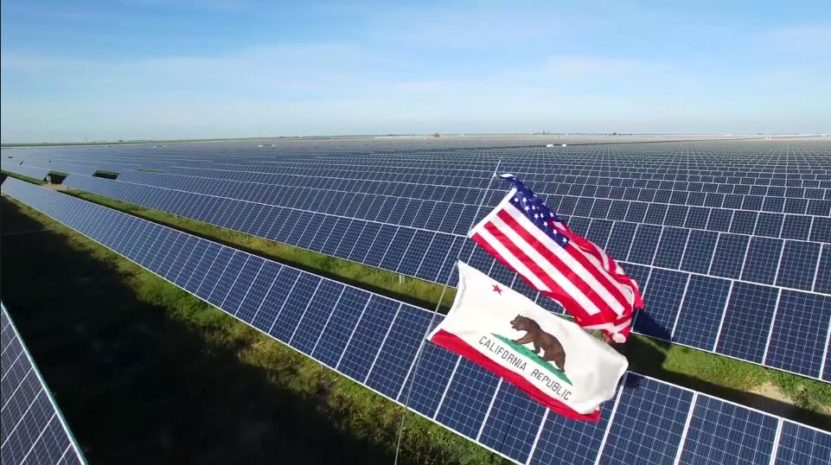Although it is in danger of being overshadowed by California’s new 100% clean energy mandate, a bill that would speed procurement of wind and solar over the next five years is also pending in the California Legislature. With just three days left in the state’s legislative session, over 15 renewable energy and environmental advocacy groups have come out in support of AB 893, including the Solar Energy Industries Association (SEIA).
The bill was originally introduced to the assembly on February 16 of last year, but is seeing new life as the California Legislature speeds towards conclusion of its current session. AB 893 would require California utilities and community choice aggregators to procure “4,250 megawatts of qualified renewable energy resources, including at least 2,500 MW of solar and wind.
The bill came about due to a belief shared by Garcia and his Senate coauthors Ben Hueso and Henry Stern that large-scale renewable energy development by utilities had stagnated in recent years. They argue that this stagnation has caused California to lose pace towards achieving the 42 million metric ton greenhouse gas emission reduction goal established by Senate Bill 350.
If passed, this bill would set in motion unprecedented development of renewable generation facilities within the state. The bill states that “Each retail seller and local publicly owned electric utility shall procure, through contracts with a service term of at least 10 years in duration, a proportionate share of electricity products from a statewide total of 5,000 megawatts of cumulative-rated generating capacity of qualified renewable energy resources.”
And thanks to an amendment last week, this 5,000 MW is then divided to state that “Not less than 2,500 megawatts shall be procured from tax-advantaged renewable energy resources.”
The language about tax-advantaged resources is a reference to the Investment Tax Credit (ITC) for solar and the Production Tax Credit (PTC) for wind. Both of these are on a schedule to phase out over the next few years, which means that if California is take advantage of these federal credits, the state needs to act.
The 2.5 GW for wind and solar will be divided is “Up for grabs,” according to Rick Umoff, California Director of State Affairs for SEIA. “Essentially utilities would go out to bid and developers would just bid for contracts,” Umoff told pv magazine.
Part of the reason that the outlined capacity is available is that the language of the bid allows for re-powering of existing wind facilities: fixing them and getting them to full power capacity at a much lower cost than the creation of an entirely new project. But while wind has that cheaper option at its disposal, the economic advantage is not lasting. The PTC is already being phased out, and the credit will expire at the end of 2019.
Here solar gains an advantage, as the ITC does not begin to decline until 2020, falling each year and dropping to 10% for commercial, industrial and large-scale solar at the end of 2021. Furthermore, a recent IRS guidance sets a low bar for solar projects to “begin construction” by the end of 2019 and still get the full 30% ITC – as long as they are completed by the end of 2023.
AB 893 has been dubbed “The Bridge Act,” and SEIA argues that it complements both SB 100 and AB 813.
“AB 813 is a very visionary bill in that it would unite major energy markets in the West and bring the western region together under one regional operator, which would effectively allow for all states in the west to more cost-effectively move towards high-penetration renewables,” explains Umoff. “But the thing is, we can’t get there if we don’t act on near-term procurement as well.”
While no vote has yet been set for AB 893, Umoff is confident not only that a vote will arise, but that the bill will pass.
SB 100 passed its main hurdle in the Assembly last night. pv magazine will be covering AB 893, SB 700 and AB 813 as the final days of the legislative session draw to a close.
This content is protected by copyright and may not be reused. If you want to cooperate with us and would like to reuse some of our content, please contact: editors@pv-magazine.com.









By submitting this form you agree to pv magazine using your data for the purposes of publishing your comment.
Your personal data will only be disclosed or otherwise transmitted to third parties for the purposes of spam filtering or if this is necessary for technical maintenance of the website. Any other transfer to third parties will not take place unless this is justified on the basis of applicable data protection regulations or if pv magazine is legally obliged to do so.
You may revoke this consent at any time with effect for the future, in which case your personal data will be deleted immediately. Otherwise, your data will be deleted if pv magazine has processed your request or the purpose of data storage is fulfilled.
Further information on data privacy can be found in our Data Protection Policy.